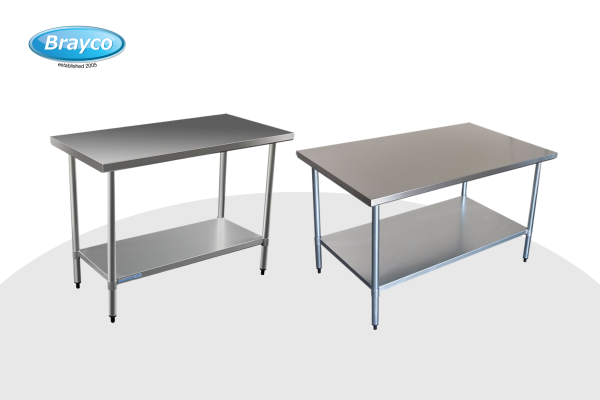How to Dispose of Hazardous Materials During Junk Removal
How to Dispose of Hazardous Materials During Junk Removal
- By Grand News Network
- September 27, 2024
When disposing of hazardous materials during junk removal, it's important to handle items like batteries, paints, chemicals, and electronics carefully to protect both safety and the environment. These materials should never be placed in regular trash. Instead, consult local waste management authorities for designated disposal sites or collection events. Hazardous materials include products containing harmful chemicals that can pollute the environment or pose health risks. Safe handling involves wearing protective gear, proper storage, and adhering to local regulations. Community events, eco-friendly disposal options, and professional junk removal services are recommended for proper disposal. Education and spreading awareness are key to promoting safe practices.
When dealing with hazardous materials during junk removal, it’s crucial to handle them carefully to ensure safety and environmental protection. Start by identifying and separating items like batteries, paints, chemicals, and electronic waste. Never throw these in the regular trash; they require special disposal. Check with local waste management authorities for designated drop-off sites or collection events. Many communities offer specialized services for these items. Proper disposal not only keeps you and your neighbors safe but also helps protect the environment from harmful contaminants.
Understanding Hazardous Materials
Before diving into disposal, it's essential to understand what constitutes hazardous materials. These include items like batteries, paint, cleaning supplies, and electronics that can be harmful if not handled properly. Hazardous materials often contain chemicals or substances that can pollute the environment or pose health risks. Familiarizing yourself with what qualifies as hazardous helps you sort your junk more effectively and ensures you follow the right procedures for disposal. Ignorance about these materials can lead to unsafe practices and environmental damage, so take time to learn and identify them.
Types of Hazardous Materials
Hazardous materials come in various forms, including batteries, paints, cleaning products, and electronics. These items often contain chemicals or heavy metals that can be harmful if improperly disposed of. Identifying these materials is crucial for safe disposal and environmental protection. Understanding the different types helps you handle and dispose of them correctly, minimizing potential risks and ensuring compliance with safety regulations.
Recognizing Dangerous Chemicals
Dangerous chemicals are often found in household products like solvents, pesticides, and certain cleaners. These substances can cause severe health issues or environmental damage if not managed properly. Look for warning labels or material safety data sheets to identify harmful chemicals in your home. Proper recognition is the first step in ensuring these materials are disposed of safely and effectively.
Safe Handling Practices
When handling hazardous materials, safety should be your top priority. Always use gloves and masks to protect yourself from exposure to harmful substances. Store these materials in their original containers, and avoid mixing them with other waste. By following these safety practices, you reduce the risk of spills or accidents, ensuring both personal safety and environmental protection.
Proper Storage Solutions
Proper storage of hazardous materials prevents leaks and accidental exposure. Use sealed, labeled containers and keep them in a cool, dry place away from children and pets. Follow specific storage guidelines for different types of materials, such as keeping flammable substances away from heat sources. Safe storage is key to managing hazardous waste responsibly and maintaining a safe living environment.
Understanding Local Regulations
Local regulations for hazardous waste disposal vary, so it’s important to know the rules in your area. Many communities have designated drop-off sites or scheduled collection events for hazardous materials. Contact your local waste management authority to get accurate information. Following these regulations helps ensure proper disposal and avoids potential fines, contributing to a safer and cleaner community.
Safety First: Handling Hazardous Items
Safety is paramount when dealing with hazardous materials. Always wear protective gear such as gloves and masks to prevent exposure to harmful substances. Handle these items with care, avoiding any spillage or breakage that could release toxins. Store them in sealed containers to prevent leaks and keep them away from children and pets. Following these precautions ensures you minimize health risks and manage the materials safely, protecting both yourself and your surroundings from potential hazards associated with improper handling.
Local Disposal Regulations
Each locality has specific regulations for disposing of hazardous materials, so it’s important to be aware of local guidelines. Many areas have designated drop-off centers or scheduled collection events for such items. Contact your local waste management authority or check their website for detailed instructions. Adhering to these regulations not only helps in proper disposal but also avoids potential fines or legal issues. Being informed about local rules ensures you contribute to a safer and more efficient waste management system in your community.
Eco-Friendly Disposal Options
Opting for eco-friendly disposal methods helps minimize environmental impact. Many communities offer recycling programs for hazardous materials like batteries and electronics. These programs ensure that harmful substances are treated or recycled in an environmentally responsible manner. Consider using these services to reduce the amount of waste sent to landfills and to support sustainable practices. Additionally, look for programs that repurpose or safely break down these materials, which can significantly lower your environmental footprint.
Community Collection Events
Participating in community collection events is an effective way to dispose of hazardous materials. These events are typically organized by local governments or environmental organizations and provide a convenient, safe way to get rid of items like old paint, chemicals, or electronic waste. Keep an eye on announcements and schedules for these events in your area. They often offer a chance to dispose of your hazardous materials properly and can be a great resource for responsible waste management in your community.
Reuse and Donate
Before disposing of hazardous materials, consider if they can be reused or donated. Some items, such as leftover paint or household chemicals, might still be usable and could benefit others. Check with local charities, community centers, or schools to see if they can use these items. However, ensure that any donations are safe and within the expiration or usage guidelines. Reusing or donating materials not only extends their life but also reduces waste, making it a more sustainable option.
Professional Junk Removal Services
For those overwhelmed by hazardous materials, professional junk removal services can be a practical solution. These services specialize in handling, transporting, and disposing of hazardous waste safely and in compliance with regulations. They can manage everything from electronic waste to chemicals, ensuring proper handling and disposal. Hiring professionals can save time and ensure that your hazardous materials are dealt with correctly, reducing the risk of environmental contamination and providing peace of mind.
Educating Yourself and Others
Educating yourself and others about hazardous material disposal is key to promoting safe practices in your community. Share information about proper handling and disposal with friends and family to help spread awareness. Participating in or organizing local workshops or information sessions can also raise community awareness. The more informed everyone is, the more effectively hazardous materials can be managed, leading to a healthier environment and better public safety. Taking the initiative to learn and educate benefits both you and those around you.
- Share Knowledge: Educate friends and family about proper hazardous material handling and disposal practices to spread awareness and promote safety.
- Organize Workshops: Host or participate in local workshops or information sessions to teach community members about safe disposal methods and regulations.
- Promote Awareness: Use social media or community bulletin boards to share tips and guidelines on hazardous material disposal.
- Encourage Proper Practices: Advocate for correct disposal methods within your community, emphasizing the importance of following local regulations.
- Lead by Example: Demonstrate safe handling and disposal of hazardous materials to inspire others to adopt responsible practices.
Conclusion
Proper disposal of hazardous materials is crucial for ensuring a safe and environmentally friendly junk removal process. By understanding and following the right procedures, you not only protect your property but also contribute to the well-being of the community and the environment. Whether dealing with old batteries, chemicals, or electronic waste, it's essential to follow local regulations and guidelines to handle these items responsibly. At JUNKAHAULICS - Raleigh, we are committed to helping you navigate the complexities of hazardous material disposal with ease and efficiency, making the process as smooth as possible.
For expert assistance with junk removal and proper hazardous material disposal, visit us at 4801 Glenwood Ave, Suite 200, Raleigh, NC 27612. Our team is ready to provide you with the support you need to ensure a clean and safe environment for you and your community.
Junkahaulics
+19194784814
http://www.junkahaulics.us/
Media Contact
Organization: Junkahaulics
Contact Person: Junkahaulics
Website: https://junkahaulics.us/
Email: Send Email
Contact Number: +19194784814
Address:915 Arthur Maddox Rd, Sanford, NC
City: Sanford
State: NC
Country:United States
Release id:17549
The post How to Dispose of Hazardous Materials During Junk Removal appeared first on King Newswire. It is provided by a third-party content provider. King Newswire makes no warranties or representations in connection with it.
Disclaimer: The views, recommendations, and opinions expressed in this content belong solely to the third-party experts. This site was not involved in the writing and production of this article.







